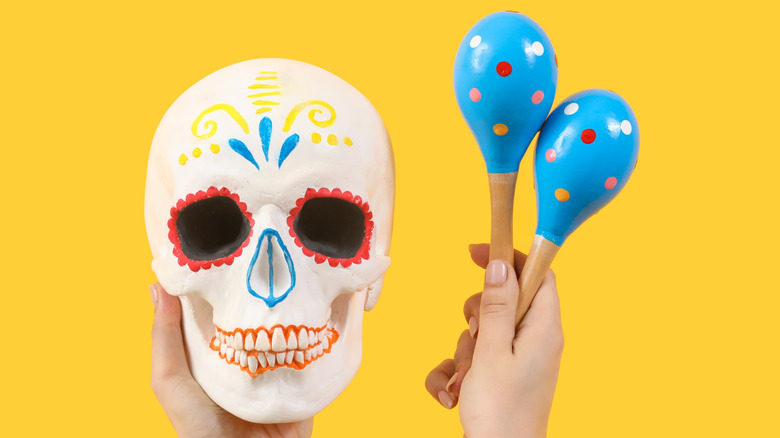How Long Does The Death Rattle Last When Someone Dies?
There are so many phenomena that are scary, unsettling, maybe even a bit morbid, and yet also happen to be deeply fascinating. For instance, when the sun slowly swells and swallows the planets in its orbit, ensuring life within its vicinity is completely wiped out, it will surely be an awe-inspiring event. The biggest threats to Earth from space are similarly terrifying to think about, but also super interesting. A gamma ray burst — which NASA describes one of the most powerful phenomena in our universe — that wipes us all out, for instance, sounds simultaneously fascinating and petrifying.
On a much smaller scale, there's the death rattle. It's a recognized symptom that happens during the last phase of life and signals the onset of death in humans — one that can, reportedly, also be quite upsetting for those who are present to witness it. It can last anywhere from a couple hours to a couple days, depending on multiple different factors and considerations, and understanding this strange symptom in greater detail only really explains why that range is so wide.
What's more, a 2014 report published in the Journal of Pain and Symptom Management (JPSM) systematically searched medical databases for articles on the prevalence and impact of death rattle and found wide variation. Some articles reported 12% of patients experienced the death rattle, while others reported much higher ratees, including one in which 92% patients displayed the symptom. The mean was determined to be 35%, which lines up with a separate 2019 study published in the British Medical Journal Supportive & Palliative Care, that found 40% of 371 patients experienced the death rattle. Either way you look at it, the death rattle is a relatively widespread phenomenon.
What is the death rattle?
The death rattle is essentially the result of mucus and other secretions collecting in a person's throat as they approach death. Often, patients are unable to cough up or swallow these secretions, either due to weakness or a change in consciousness. Therefore, their breathing patterns cause the mucus to vibrate, creating a wet gurgling sound that's referred to as the death rattle. If the patient's breathing patterns change or their breaths become sharper, this can amplify the sound. The rattle typically occurs during the dying phase, which the 2019 BMJ study defined as the period when death was expected to occur within hours or days. Other experts have claimed that the average person dies 25 hours after the death rattle starts.
As you might expect, being around to witness such a thing can be quite upsetting for relatives of the dying individual, not only because it signals that their time is nearing, but because it's an unpleasant sound, demonstrating that the person's upper airway is filled with mucus and they're unable to do anything about it. A study published in BMC Psychology gathered information from 19 family members of 15 patients and concluded that most relatives found the death rattle to be distressing, and had specific concerns about how long the rattling would last.
As such, there is interest in determining how long the death rattle lasts, if only so that medical practitioners can reassure relatives and gain a better understanding of how to limit the length of the sound itself. Doctors and nurses already try interventions such as repositioning the patient or suctioning their airway, mostly to make those present feel more comfortable, as there is little evidence that the death rattle is uncomfortable for the actual patients. But without these interventions it's tough to say exactly how long the death rattle lasts.
How long does the death rattle last?
The length of any death rattle sound depends on a number of factors. Since the sound is the result of the patient being unable to clear their airway via swallowing or coughing, the sound may persist for some time — from the moment the patient becomes unable to clear their throat to the moment they pass away. That means patients could exhibit the symptom for hours or even days unless action is taken. A study published in the journal Annals of Palliative Medicine noted that the death rattle usually begins 24 to 48 hours before death.
Of course, if any interventions are used, this can put an end to the sound much more quickly, though not all such interventions are guaranteed to work and some can even cause discomfort for the patient. Suctioning, for example, can lead to bleeding and even vomiting, which considering the death rattle itself isn't thought to cause discomfort for patients, is simply a way to make matters worse.
As such, there is no definite answer as to how long the death rattle lasts. It can be different for each patient and very much depends on when they become unable to clear their throat during the end of their life and whether medical interventions are used.


